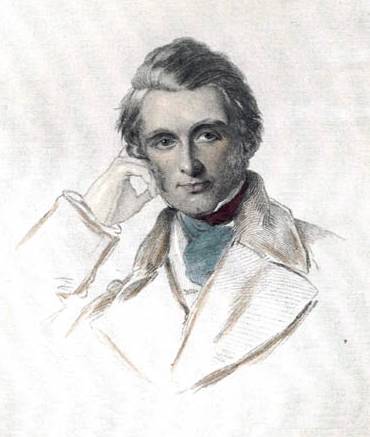"Be so kind, on the first bright, sunny day after you have read this, as to look for a white [washed?] cottage, on one side of which the sun falls as directly as may be, but so as yet to get slightly and obliquely at another side. On the high light you will find that you cannot see the projecting granulation, but in the oblique light you can see every pebble separately. Whatever detail or projections are on the high light, as the sun penetrates into every chink and cranny of them, can cast no shadows, and have no dark sides and, therefore, are indistinctly and imperfectly seen, and indeed, unless very large and important, are not seen at all; whence arises the general rule. There can be no detail on the high light. It is all blaze. But whatever projections and details exist on the surface turned obliquely to the light, each, however small, has its dark side and shadow, and every one is seen, more and more distinctly as the object is turned more and more from the light. The result of this is, that as every object not polished has more or less of texture on its surface, and nearly all have roughness and projections, and detail in some degree, a general tone of shadow is obtained on these oblique surfaces far deeper than could be accounted for by the mere fact of the oblique fall of the light, and they sink, practically, into what artists call Middle Tint. Again, the Dark Side, though entirely inaccessible to the direct lightŕis very strongly affected by the reflected light, which as it were fills the whole atmosphere, and illuminates every object open and exposed to it; and it is also very often so energetically illumined by accidental lights that its mass is broken up, and it usually becomes also merged in what artists call Middle Tint. But that part of it which is accidentally Shadow is usually, by its position, inaccessible even to the reflected light, and always more inaccessible than the Dark Side. It is therefore, in near objects, and in sunlight, so dark in comparison with the high lights, that their relative degrees of intensity can be scarcely expressed with real truth, except by the jet black of chalk on white paper."
Hence shadows are in reality, when the sun is shining, the most conspicuous things in a landscape, next to the highest lights. All forms are understood and explained chiefly by their agency: the roughness of the bark of a tree, for instance, is not seen in the light, nor in the shade; it is only seen between the two, where the shadows of the ridges explain it. And hence, if we have to express vivid light, our very first aim must be to get the shadows sharp and visible; and this is not to be done by blackness (though indeed chalk on white paper is the only thing which comes up to the intensity of real shadows), but by keeping them perfectly flat, keen, and even. A very pale shadow, if it be quite flat, if it conceal the details of the objects it crosses, if it be grey and cold compared with their colour, and very sharp-edged, will be far more conspicuous, and make everything out of it look a great deal more like sunlight, than a shadow ten times its depth, shaded off at the edge, and confounded with the colour of the objects on which it falls.
Modern Painters I

No comments:
Post a Comment